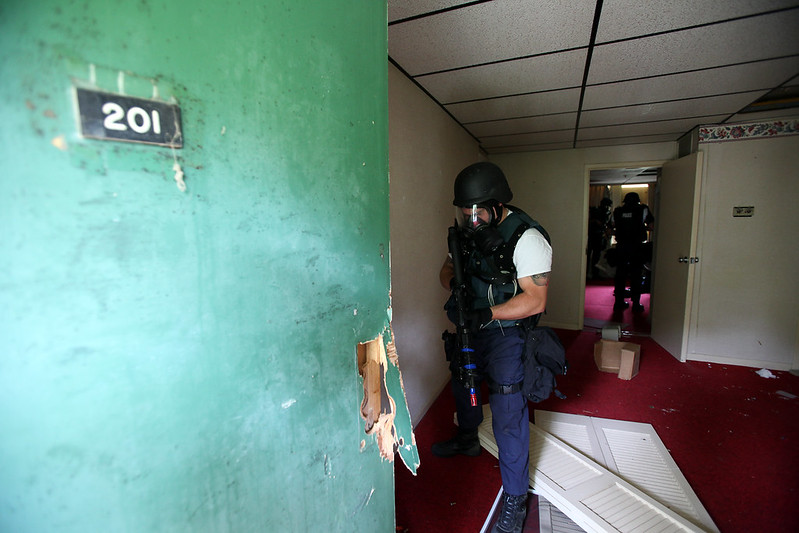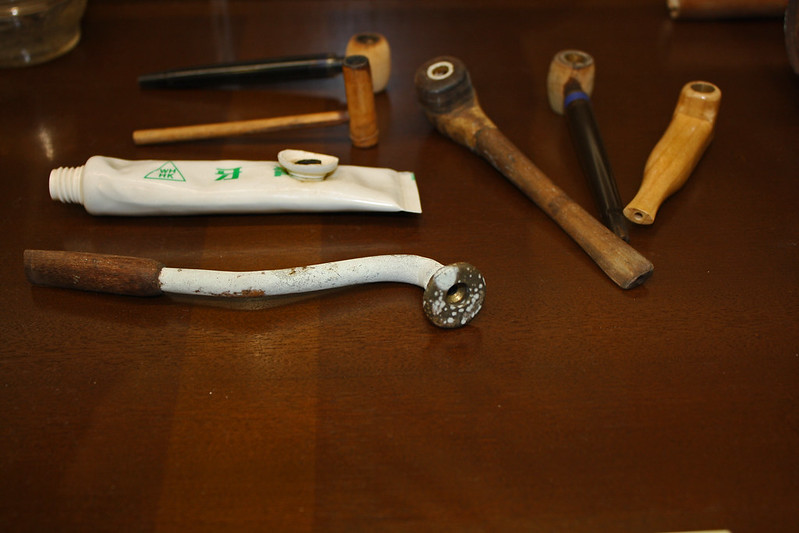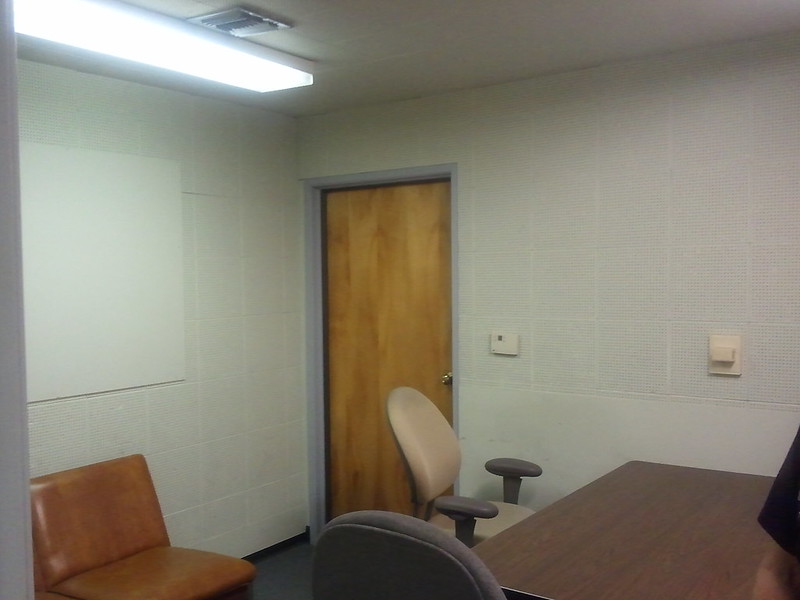This week’s top three summaries: R v Javanmardi, 2019 SCC 54, R v Shaikh, 2019 ONCA 895, and R v Lebada, 2019 ONCJ 834
R v Javanmardi (SCC)
[November 14/19] Elements: Criminal Negligence Causing Death and Unlawful Act Manslaughter 2019 SCC 54 [Majority Reasons. Abella J. (Modaver, Karakatsanis, Cote, and Brown JJ. Concurring)]
AUTHOR’S NOTE: Unlawful act manslaughter and criminal negligence causing death are some of the most serious offences in the criminal code, but their elements have the possibility of applying to a wide range of conduct if it results in a death. Herein, the majority confined the definition in unlawful act manslaughter where the predicate offence is a strict liability offence. That is, a marked departure from the standard of a reasonable person applies irrespective of the limited mental element for strict liability offences. The case also provides a useful summary of the elements of criminal negligence causing death and unlawful act manslaughter.
Pertinent Facts
[1] Mitra Javanmardi opened a naturopathic clinic in Quebec in 1985. She has a degree in science from McGill University, a doctorate in naturopathic medicine from the National College of Naturopathic Medicine in Portland, Oregon, and a related diploma which involved 500 hours of further courses. Ms. Javanmardi’s education included classes and clinical training about intravenous injection techniques. She has treated between 4,000 and 5,000 patients at her clinic since it opened and, starting in 1992, has administered nutrients to approximately ten patients per week by way of intravenous injection. Intravenous administration of nutrients by naturopaths is not legal in Quebec but is lawful in most provinces.
[3] Ms. Javanmardi prepared the nutrient solution for Mr. Matern’s intravenous injection. It contained magnesium chloride, manganese chloride, potassium chloride, L-Taurine, L-Carnitine, and sterile water. To create the solution, Ms. Javanmardi combined nutrients from separate vials. One vial contained L-Carnitine. Mr. Matern was the third patient to whom L-Carnitine from the same vial had been administered that day. The other two patients did not have adverse reactions to their injections. The vial turned out to be contaminated.
[4] Mr. Matern reacted negatively to the injection almost immediately. He complained of being hot and nauseous. Ms. Javanmardi stopped the intravenous injection and checked Mr. Matern’s vital signs, which were stable. Mr. Matern had no fever, was not experiencing confusion, and there was no sign of infection on the site of the injection.
[6] Despite his symptoms, Mr. Matern said that he did not want to go to the hospital. His wife and daughter took him home. In a call later that day with Mr. Matern’s daughter, Ms. Javanmardi explained that Mr. Matern needed to stay hydrated and advised his daughter to take him to the hospital if she was unable to keep him hydrated.
[7] That night, Mr. Matern’s daughter called an ambulance because she was concerned that her father’s condition was worsening. Doctors at the hospital noted signs of endotoxic shock. Mr. Matern’s symptoms continued to worsen and he died of endotoxic shock some hours later.
Trial Findings
[11] Villemure J. was satisfied that Ms. Javanmardi had the necessary skills to administer intravenous injections, had observed the required protocols and had taken sufficient precautions at every stage of the process.
[12] Based on these findings, Villemure J. acquitted Ms. Javanmardi of both charges. As to the charge of criminal negligence causing death, Villemure J. concluded that Ms. Javanmardi’s conduct did not show a marked departure from the standard of care that a reasonable person in her circumstances would have exercised. Villemure J. was not satisfied that a reasonable person would have been aware of any risk inherent in Ms. Javanmardi’s conduct and therefore concluded that the Crown had not proved beyond a reasonable doubt that Ms. Javanmardi’s conduct showed wanton or reckless disregard for Mr. Matern’s life or safety.
Elements of Criminal Negligence Causing Death
[19] The actus reus of criminal negligence causing death requires that the accused undertook an act — or omitted to do anything that it was his or her legal duty to do — and that the act or omission caused someone’s death.
[20] The fault element is that the accused’s act or omission “shows wanton or reckless disregard for the lives or safety of other persons”. Neither “wanton” nor “reckless” is defined in the Criminal Code, but in R. v. J.F., 2008 SCC 60 (CanLII), [2008] 3 S.C.R. 215, this Court confirmed that the offence of criminal negligence causing death imposes a modified objective standard of fault — the objective “reasonable person” standard (paras. 7-9; see also R. v. Tutton, 1989 CanLII 103 (SCC), [1989] 1 S.C.R. 1392, at pp. 1429-31; R. v. Morrisey, 2000 SCC 39 (CanLII), [2000] 2 S.C.R. 90, at para. 19; R. v. Beatty, 2008 SCC 5 (CanLII), [2008] 1 S.C.R. 49, at para. 7).
[21] As with other negligence-based criminal offences, the fault element of criminal negligence causing death is assessed by measuring the degree to which the accused’s conduct departed from that of a reasonable person in the circumstances.[3] For some negligence-based offences, such as dangerous driving, a “marked” departure satisfies the fault element (J.F., at para. 10; see also: Beatty, at para. 33; R. v. Roy, 2012 SCC 26 (CanLII), [2012] 2 S.C.R. 60, at para. 30; R. v. L. (J.) (2006), 2006 CanLII 805 (ON CA), 204 C.C.C. (3d) 324 (Ont. C.A.), at para. 15; R. v. Al-Kassem, 2015 ONCA 320 (CanLII), 78 M.V.R. (6th) 183, at para. 6). In the context of criminal negligence causing death, however, the requisite degree of departure has been described as an elevated one — marked and substantial (J.F., at para. 9, applying Tutton, at pp. 1430-31, andR. v. Sharp (1984), 1984 CanLII 3487 (ON CA), 12 C.C.C. (3d) 428 (Ont. C.A.)).
[22] These standards have much in common. They both ask whether the accused’s actions created a risk to others, and whether “a reasonable person would have foreseen the risk and taken steps to avoid it if possible” (see Roy, at para. 36; Stewart, at p. 248)....
[23] In J.F., Fish J. did not fully explain how to distinguish between a “marked” and a “marked and substantial” departure, as the case did not “turn on the nature or extent of the difference between the two standards” (paras. 10-11)....Based on J.F., the Crown must also establish that the accused’s conduct constituted a marked and substantial departure from the conduct of a reasonable person in the accused’s circumstances (the fault element).
Elements of Unlawful Act Manslaughter
[25] The actus reus of unlawful act manslaughter under s. 222(5)(a) requires the Crown to prove that the accused committed an unlawful act and that the unlawful act caused death (R. v. Creighton, 1993 CanLII 61 (SCC), [1993] 3 S.C.R. 3, at pp. 42-43; R. v. DeSousa, 1992 CanLII 80 (SCC), [1992] 2 S.C.R. 944, at pp. 959 and 961-62). The underlying unlawful act is described as the “predicate” offence (DeSousa, at p. 956; Creighton, at p. 42). The predicate offence in Ms. Javanmardi’s case is administering the intravenous injection contrary to s. 31 of Quebec’s Medical Act, a strict liability offence.
[26] .... An unlawful act, accompanied by objective foreseeability of the risk of bodily harm that is neither trivial nor transitory, is an objectively dangerous act.
[30] As a result, the actus reus of unlawful act manslaughter is satisfied by proof beyond a reasonable doubt that the accused committed an unlawful act that caused death. There is no independent requirement of objective dangerousness.
[31] The fault element of unlawful act manslaughter is, as noted, objective foreseeability of the risk of bodily harm that is neither trivial nor transitory, coupled with the fault element for the predicate offence (Creighton, at pp. 42-43, DeSousa, at pp. 961-62). I agree with the Court of Appeal that where the predicate offence is one of strict liability, as in this case, the fault element for that offence must be read as a marked departure from the standard expected of a reasonable person in the circumstances (see also Grant et al., at pp. 4-14 and 4-15; Larry C. Wilson, “Beatty, J.F., and the Law of Manslaughter” (2010), 47 Alta L. Rev. 651, at pp. 663-64; Kent Roach, Criminal Law (7th ed. 2018), at p. 466; R. v. Curragh Inc. (1993), 125 N.S.R. (2d) 185 (Prov. Ct.); R. c. Fournier, 2016 QCCS 5456, at paras. 62-70 (CanLII); and L.M., at paras. 44-49). This approach aligns with Creighton, where McLachlin J. clarified that predicate offences involving carelessness or negligence must be read as requiring a marked departure from the standard of the reasonable person (p. 59).
[32] Both charges against Ms. Javanmardi, therefore, required her conduct to be measured against the standard of a reasonable person in her circumstances — as part of the fault element of both criminal negligence and the predicate offence for unlawful act manslaughter.
The Reasonable Person Standard
[36] This Court most comprehensively considered how to assess and apply the reasonable person standard in Creighton. In that case, a woman died as a result of a cocaine injection given to her by Marc Creighton, a drug dealer. McLachlin J. clarified that the modified objective standard “is that of the reasonable person in all the circumstances of the case” (p. 41). She endorsed the “reasonable person” standard in order to maintain “a uniform standard for all persons … regardless of their background, education or psychological disposition” (p. 60). In her view, “[w]ithout a constant minimum standard, the duty imposed by the law would be eroded and the criminal sanction trivialized” (p. 70). She concluded that Mr. Creighton’s habitual drug use was not to be considered in setting the “reasonable person” standard.
[37] McLachlin J. explained, however, that greater care may be expected of the “reasonable person” on the basis of the nature and circumstances of the activity (p. 72). Certain activities, for example, require special attention and skill. An accused undertaking such an activity may be found to have breached the reasonable person standard if he or she is not qualified to provide the special care that the activity requires, or negligently failed to exercise such care while engaged in the activity. In this way, the law maintains a “constant minimum standard” for every person who engages in an activity requiring special care and skill: they must be both qualified and exercise the special care that the activity requires.
[38] ...In this case, the activity is administering an intravenous injection, and the standard to be applied is that of the reasonably prudent naturopath in the circumstances.
R v Shaikh (ONCA)
[November 13/19] Charter s.11(b) - Defence Re-Election to Prov Ct. Does Not Alter the Presumptive Period & Defence Action that Triggers Inevitable Institutional Delay Doesn't Make that Defence Delay - 2019 ONCA 895 [Reasons by Paciocco J.A., Watt and Lauwers JJ.A. Concurring]
AUTHOR’S NOTE: This case gives the Defence some good nuggets for 11(b) applications. First, defence re-election does not transform the presumptive delay period unless it happens after a preliminary hearing. Second, defence actions that trigger inevitable institutional delay do not get transformed into defence delay.
Overview
[3] Mr. Shaikh’s only ground of appeal is that both judges erred in denying his s. 11(b) applications to stay his prosecution for unreasonable delay.
[4] For reasons that follow, I would allow Mr. Shaikh’s appeal, based on errors committed by the application judge. The s. 11(b) application should have been granted, and the proceedings stayed. I would set aside Mr. Shaikh’s convictions and the finding of guilt contrary to s. 87(2) of the Criminal Code and stay the proceedings against him.
Defence Re-Election and the Presumptive Period
[49] However, on the authority of Jordan, the 30-month presumptive ceiling does not apply in this case. The 18-month presumptive ceiling does. The Jordan majority described how the appropriate ceiling is to be selected, at para. 46:
At the heart of the new framework is a ceiling beyond which delay is presumptively unreasonable. The presumptive ceiling is set at 18 months for cases going to trial in the provincial court, and at 30 months for cases going to trial in the superior court (or cases going to trial in the provincial court after a preliminary inquiry). [Emphasis added].
[52] Here, the re-election to provincial court did not occur after the preliminary inquiry, but before it commenced. Applying the standards expressed in Jordan, the 18-month period applies.
[57] The bright line approach that I consider myself compelled to follow does not enable the defence to manufacture a s. 11(b) delay by re-electing into a shorter presumptive period of delay. Section 561(1) of the Criminal Code requires Crown consent before the accused can re-elect to a trial by a provincial court judge. Where re-election would create the risk of s. 11(b) problems, the Crown has the authority to, and should, refuse consent, absent a s. 11(b) waiver.
Defence Re-Election as a Triggering Event for Inevitable Institutional Delay
[67] The second period of delay is the 79-day period between November 30, 2016, when Mr. Shaikh re-elected to provincial court, and February 17, 2017, the final day in the first set of trial dates offered to Mr. Shaikh. Mr. Shaikh contends that this delay cannot fairly be ascribed solely to him as defence delay. In the unusual circumstances of this case, I agree. Ordinarily, delay following re-election, will have been caused solely by the defence and will qualify as defence delay. However, in the unusual circumstances of this case, not all the delay that followed his re-election was triggered by these events. Delay was inevitable even if re-election had not occurred because no court was available for the first two and one-half days of the scheduled preliminary inquiry. As the presiding preliminary inquiry judge recognized, given the number of witnesses to be called, the preliminary inquiry could not be completed in the remaining time and therefore had to be rescheduled, in any event. It is not appropriate to treat a period of delay that would have occurred anyway because of institutional delay as defence delay.
Conclusion
[Various errors in the treatment of the transitional exceptional circumstance were also found] [88] The application judge called this a close case even when using a 20-month net delay calculation and she gave every indication that she would have stayed the charges had she properly quantified the period of delay. That was the outcome she should have ordered.
R v Lebada (ONCJ)
[November 20/19] – Charter s.10(b) - Right to Counsel of Choice – 2019 ONCJ 834 [Justice C.A. Parry
AUTHOR’S NOTE: Police can get impatient with impaired people trying to access their counsel of choice while they wait to place them on the station instrument for an Over 80 investigation. They should be more patient. Steering someone towards duty counsel can lead to a breach of s.10(b) even where it is unintentional.
Overview
[1] Mr. Lebada alleges that his arresting officer explicitly steered him towards duty counsel after arresting him for an Over 80 offence, thereby breaching his constitutionally guaranteed right to counsel of choice. To remedy this breach, he seeks the exclusion of his breath samples. The Crown concedes that the police officer steered Mr. Lebada to duty counsel but argues that the officer did not thereby breach Mr. Lebada’s right to counsel. Alternatively, the Crown argues that the breach was minor and had a minimal impact upon Mr. Lebada.
[2] In my view, the Crown is incorrect when asserting that the steering an accused to duty counsel cannot result in a breach of an accused’s right to counsel. This contention runs counter to settled law.
Pertinent Facts
[12] As is customary in this Region, Constable Forde then assumed control of the process of contacting counsel, while Mr. Lebada waited locked in his jail cell. Constable Forde got a phone number for each of the two lawyers from Mr. Lebada’s phone. He placed a call to Mr. Mackay at 1:18 a.m., 50 minutes after the arrest. He left a message at the number provided. He then called Mr. Mackay a second time at 1:20 a.m., again leaving a message. He then called Ms. Swan at 1:23 a.m., again leaving a message. At about 1:50 a.m., Constable Forde then spoke to Mr. Lebada. He informed Mr. Lebada that he had called both lawyers and left messages for them. He then told Mr. Lebada that in his 13 years experience no lawyer has ever returned a call back at that time of night. He did not seek alternative phone numbers for these lawyers, nor did he ask Mr. Lebada if he had any other choice of counsel. He also did not explain what he said in his messages to both counsel. Instead, the topic turned to duty counsel.
[13] I find as a fact that Constable Forde told Mr. Lebada that duty counsel was his next and, implicitly, only option. This finding is supported by Constable Forde’s recounting of the events to the breath technician, a recounting recorded in the breath room video tendered in evidence at this trial. In that recounting, Constable Forde noted to the breath technician that the two lawyers did not call back and that, consequently, he – that is, Constable Forde, called duty counsel. He described a cause and effect. Forde’s description of the process suggests that Forde, not the accused, reflexively turned to duty counsel as the next resort. This description thus corroborates Mr. Lebada’s assertions about what Forde told him when the two named lawyers were unavailable, which I will now discuss.
[15] In summary, according to Mr. Lebada, he did not perceive himself to have any other options. Having been told of the extreme unlikelihood of his lawyers calling back, having been told of the two-hour limit, and having been told of the need to now speak with duty counsel, he acquiesced to the duty counsel option. I accept his evidence on this point, not only for the reasons just mentioned, but also for the fact that this area of his evidence forms part of a larger, extremely detailed, and logically coherent narrative that gains verisimilitude from its detail and internal logic. I therefore reject Cst. Forde’s assertion that duty counsel was presented merely as one option. I pause here to say that I do not ascribe any nefarious intent to Cst. Forde. Rather, I accept that his behaviour was the by-product of Constable Forde’s honest belief that the two lawyers would not call back, of his rather perfunctory approach to the issue generally, his apparent assumption that duty counsel would be the accused’s next choice, and of his apparently unsophisticated and imprecise communication and record keeping skills. I accept that it never occurred to Constable Forde to ask Mr. Lebada if he had alternative contact numbers for the two lawyers in question, or to ask if Mr. Lebada had other lawyers in mind. I likewise accept that it did not occur to him that he might be dissuading Mr. Lebada from waiting to hear back from his chosen lawyers when telling Mr. Lebada about is experience with call-backs over the last 13 years. His failings were more failures of communication and imagination than any failures of conscience. I note as well, that I do accept Constable Forde’s evidence that he told Mr. Lebada that if either of the two named lawyers called back at any time, he would allow Mr. Lebada to speak with them. This point is conceded by Mr. Lebada. It demonstrates Constable Forde’s good will and decency, and it demonstrates Mr. Lebada’s fairness when testifying.
[16] Mr. Lebada spoke with duty counsel at around 1:58 a.m. The call ended at 2:01 a.m. It was, by any measure, a masterclass in brevity.
[17] Following the call, Constable Forde spoke to Mr. Lebada. Forde asked Lebada if he was satisfied with his call. According to Mr. Lebada, he told Forde that he would have rather spoken to his own lawyer. Constable Forde could not recall one way or the other whether this utterance was made. He also agreed that it was a possibility that Mr. Lebada said of duty counsel, “I don’t know this guy.” He also agreed that it was a possibility that, when pressed to declare whether satisfied or unsatisfied, Mr. Lebada shrugged and said “well, I guess I am satisfied.” Mr. Lebada, for his part, testified that after declaring that he would have rather spoken to his own lawyer – a statement that he believed clearly denoted his dissatisfaction – Cst. Forde stated that he had to say he was either satisfied or unsatisfied – and that he could only proceed with the breath tests if he said he was satisfied. Lebada inferred that a failure to do the tests would result in a charge, because he had received a warning of this kind at the roadside during the ASD procedure. According to Lebada, he therefore shrugged, palms facing the sky, and said “well, I guess I am satisfied.” Given Cst. Forde’s declared inability to challenge these assertions, given Lebada’s firm and detailed account of them, and given what both Lebada and Forde said in the breath room video, I accept Mr. Lebada’s evidence here.
[18] In summary, I accept that Constable Forde’s initial recitation of Mr. Lebada’s right to counsel was complete and proper. Amongst other things, it clearly conveyed that he had the right to contact any lawyer of his choosing. However, I conclude that Constable Forde, through his subsequent words and actions, misled Mr. Lebada about the scope of his right to counsel of choice. Although he mislead Mr. Lebada, I do not believe he did so intentionally. Instead, his somewhat careless and imprecise communication are to blame. Cst. Forde thereafter assumed control of the process of contacting counsel. He called counsel and left messages for them. Cst. Forde told Lebada of the extreme unlikelihood of his lawyers of choice calling back. I further find that Constable Forde told Mr. Lebada that, because of the two-hour time limit, Mr. Lebada would have to speak to duty counsel. I find as a fact that Mr. Lebada acquiesced to this option, because Cst. Lebada inadvertently caused him to believe that this was the only viable option remaining. I accept that Mr. Lebada expressed his dissatisfaction with his ephemeral call with duty counsel by stating that he would rather have spoken to his own counsel and that he did not know the duty counsel with whom he spoke. I accept that Mr. Lebada had other choices available to him on his phone, but that he did not, as a result of what Cst. Forde had thus far told him, perceive them to be an option. I accept that when told by Mr. Lebada of his continuing desire to speak to his own counsel, Cst. Forde insisted Mr. Lebada either state he was satisfied or unsatisfied. He appears to me to have been unable to process Mr. Lebada’s response, because it did not fit neatly into his mental checklist. His adherence to a mental checklist appears to have prevented him from digesting and appropriately responding to the complaint being made to him. I further accept that Mr. Lebada provided a clearly tepid declaration of his satisfaction out of fear of being charged for refusing to provide a breath sample. I am not satisfied that any of these things came to pass as a result of any malicious intent on the part of Cst. Forde. Rather, I conclude that what we have here is a failure to communicate – a failure for which Cst. Forde bears responsibility.
Section 10(b) and the Right to Counsel of Choice
[20] When the police arrest or detain an accused, section 10(b) of the Charter provides rights to the accused and imposes duties upon the police.
[21] For their part, the police are required:
(1) To inform the accused of his or her right to retain and instruct counsel without delay and of the existence and availability of Legal Aid and duty counsel;
(2) If the accused has indicated a desire to exercise this right, to provide the accused with a reasonable opportunity to exercise the right; and
(3) To refrain from eliciting evidence from the accused until he or she has had that reasonable opportunity to speak with counsel.
The first duty is informational. The latter two are implementational: See R. v. Bartle, 1994 CanLII 64 (SCC), [1994] S.C.J. No. 74.
[24] The right to counsel includes the right to speak to a counsel of one’s own choosing. The failure to allow an accused to speak to their counsel of choice may constitute a violation of that person’s Charter right. However, that right is not absolute. If the accused’s chosen lawyer is not available, detainees have the right to refuse to speak with other counsel and to wait a reasonable amount of time for their lawyer of choice to respond. What amounts to a reasonable amount of time will depend upon the circumstances, including the seriousness of the charge and the urgency of the situation: see R. v. Willier, supra. The existence of a two-hour statutory presumption does not, by itself, constitute such a compelling or urgent circumstance as to categorically deny the accused the right to insist upon his counsel of choice: see R. v. Prosper, 1994 CanLII 65 (SCC), [1994] S.C.J. No. 72. Instead, it is merely one factor in assessing the reasonableness of the accused’s insistence upon a particular counsel. After the expiration of a reasonable amount of time, the right to counsel of choice expires and the accused must turn to an alternative. Accused persons who fail to do so, risk the court concluding that they have not been reasonably diligent in asserting their right: see R. v. Willier, supra; and also R. v. Richfield, 2003 CanLII 52164 (ON CA), [2003] OJ No 3230. Thus, there exists a tension between the police duty to inform of and facilitate the right to counsel, on the one hand, and the accused’s obligation to assert the right of which he/she has been properly informed. The resolution of this tension is largely fact driven.
[26] However, when an accused asserts a right to speak to a specific counsel, the ball lands back in the officer’s court and the court expects a greater degree of implementational diligence from the police. Consequently, where an accused has asserted his right to consult a specific counsel and that counsel does not call back, the police should ask the accused if he would like to consult another lawyer. Alternatively, the police should ask the accused whether he has another number for that lawyer or should give the accused access to a directory to enable the accused to find an alternate number for that lawyer: see R. v. Traicheff.2010 ONCA 851 (CanLII) at para 2; see also R. v. Vernon. 2015 ONSC 3943 (CanLII), leave to appeal refused 2016 ONCA 211 (CanLII); R. v. Wannamaker,[2019] O.J. No. 5732 (S.C.J.); R. v. Lewis, [2019] O.J. No. 5233 (S.C.J.). The failure to do so may result in the court concluding that (1) the police failed to provide sufficient information for the accused to diligently assert his/her right and (2) the police failed therefore to sufficiently facilitate contact with counsel.
[27] Where an accused reasonably and diligently expresses dissatisfaction with his/her consultation with counsel, the police will continue to bear the duty of facilitating the accused’s contact alternative counsel or providing a Prosper warning if the accused is contemplating waiving the right altogether: see R. v. Williersupra, at para 42.
Application to the Facts
[28] In the present case, Constable Forde initially provided an accurate recitation of Mr. Lebada’s right to counsel. However, he subsequently, inadvertently and incorrectly conveyed by words and deed to Mr. Lebada that Mr. Lebada’s right to counsel of choice was limited to a first and second choice. When neither of those two lawyers called back, the officer should have asked Mr. Lebada if he wished to search his phone or a directory for an alternate number for those chosen counsel. Alternatively, Constable Forde should have asked Mr. Lebada if he wished to speak to a different lawyer. He did not do so. Instead, he told the accused that he needed to speak to duty counsel, because of the impending expiration of two-hour presumption limit. I note that at the time Constable Forde told Mr. Lebada to use duty counsel, only an hour and twenty-two minutes had transpired since Mr. Lebada last occupied the driver’s seat of his vehicle [12:28 a.m., when Mr. Lebada failed the ASD test]. The time at which the officer lost the benefit of any statutory presumption was still a considerable period of time away. There was no hurry.
[29] In light of Constable Forde’s miscommunications, Mr. Lebada’s belief that he was down to his last option was a reasonable belief. Because he had been provided faulty information, his obligation to pursue his right with reasonable diligence had, at the very least, been attenuated – if not entirely eliminated. Nevertheless, Mr. Lebada voiced what he reasonably believed was a clear dissatisfaction with his duty counsel advice. Constable Forde failed to adequately respond to Mr. Lebada’s complaint. Mr. Lebada reasonably believed, based upon the information provided to him throughout his dealings with Constable Forde, that he could be charged with a Refusal if Mr. Lebada did not tell Constable Forde, he was satisfied with duty counsel’s advice. Forde had told him he could not proceed to obtain a sample until Mr. Lebada indicated his satisfaction. Forde had earlier told him, in respect of the ASD procedure, that failure to provide a sample would result in a charge. In response to this conundrum, Lebada issued what could only reasonably be construed as a disingenuous “I guess” with his palms raised to the sky, when reluctantly voicing a coerced declaration of satisfaction. It would appear Forde had metaphorical boxes to tick off and the situation did not fit neatly into any of those boxes. Rather than conduct any thoughtful inquiry, Forde insisted the accused shoehorn his answer into one of these metaphorical boxes. In my view, the circumstances required Forde to do more to meaningfully implement a right that the accused diligently asserted.
[33] The Crown’s contention that no breach arose from the streaming in this case runs contrary to the principles delineated in the above noted jurisprudence from the Supreme Court of Canada and Court of Appeal for Ontario. Having regard to the authorities and principles discussed above, I conclude that Constable Forde violated Mr. Lebada’s right to counsel of choice by inadvertently misleading Mr. Lebada about his constitutionally protected options. Given the misleading information presented to Mr. Lebada and given the control exercised by Constable Forde over Mr. Lebada’s access to counsel, I conclude that Mr. Lebada exercised more than ample diligence in asserting his right. Finally, I conclude that Constable Forde violated Mr. Lebada’s right to counsel by failing to properly facilitate the right reasonably asserted by Mr. Lebada.
Conclusion
[48] Nevertheless, given the relative seriousness of the breach and given the significant impact upon Mr. Lebada’s Charter-protected interests, I conclude that the long-term repute of the administration of justice is best preserved by the exclusion of Mr. Lebada’s breath tests.






